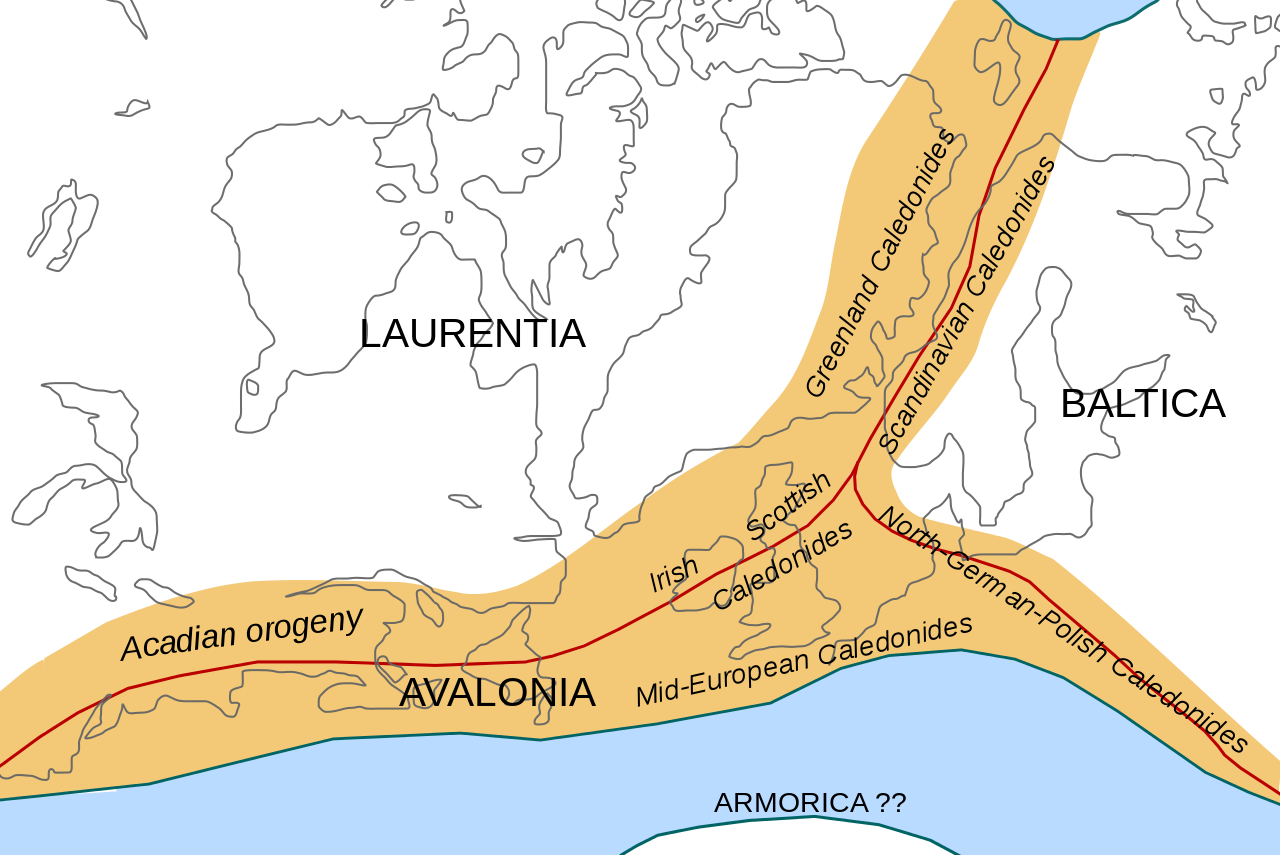I was lucky enough to see Maine's famous visitor on December 30, 2018. I had traveled up to southern Maine for a short, unrelated trip, but I was only 20 minutes away from Portland, so of course I couldn't pass up the opportunity to see it! After a first attempted failed on December 29, I—along with my birding friends and about 30 other birders—finally saw the hawk on December 30 at Deering Oaks Park in downtown Portland. It was an easy find on that day; we simply pulled up to the park, parked the car, and walked up to the mass of people with binoculars and cameras who were all staring quietly at the hawk, who was perched in a spruce tree by the park's entrance.
 |
| Range map courtesy of Avibirds and NatureServe. |
Several Great Black Hawks had been observed over the past few decades in a small area of southern Florida, but those records were never accepted by the rare bird committee of the state. To "count" in the official records, it has to be nearly certain that the rare bird in question is a wild individual that showed up into the area on its own volition. Great Black Hawks are known to be kept in captivity, and it could never be pinned down whether the Florida one(s) were wild vagrants or released/escaped captive individuals. To dive into that quagmire of a story—which spans decades—check out this detailed write up on the Tropical Audubon Society's page.
The Timeline
 |
| The location of South Padre Island, Texas. Map courtesy of Google Maps. |
The saga of the Texas/Maine Great Black Hawk began back on April 24, 2018, when a birder photographed a juvenile black hawk species on South Padre Island, Texas. It was initially uncertain whether it was a Common Black Hawk (a species whose range extends into southern Arizona and New Mexico, but have been recorded from southern Texas as well) or a Great Black Hawk. The ID was quickly confirmed as a Great Black Hawk as the photos were circulated on Facebook and elsewhere. A few other birders saw it within the hour or so it was discovered, but the bird quickly disappeared. Despite birders searching the island, it couldn't be relocated later that day, nor in the upcoming days. It appeared it was a one day wonder, something that often happens with rare birds.
The Great Black Hawk was a species that had been long predicted to show up in the southern US. Although it is a sedentary species across its normal range, the very northern tip of its range is only a mere 200 miles from the US border. So tantalizing close that many birders assumed one would eventually show up in Texas. When this one showed up near the Texas/Mexico border (near the famous birding hotspot of Brownsville, at that), it made logical sense. But what was about to happen made absolutely no sense.
 |
| The location of Biddeford Pool, Maine, where the Great Black Hawk first showed up in Maine. Map courtesy of Google Maps. |
In the end, it was confirmed that a Great Black Hawk was indeed in the Biddeford Pool area of Maine. Then the discussion moved to the next logical question: Was this juvenile Great Black Hawk the same juvenile Great Black Hawk that had shown up in Texas back in April? It simultaneously seemed both a ridiculous idea and a totally believable idea.
Then, a close inspection of the markings on the undersides of the wings confirmed that the Texas and Maine individuals were, in fact, the same juvenile Great Black Hawk! Not only had this Great Black Hawk shown up 200 miles north of the northern tip of this species' range, but it then showed up around 1,970 miles further north in Maine over 3 months later. Of course, this raised the question of just where it had been during those 3 months. It had escaped detection that entire time, and no one knew—and no one still knows nor will ever know—whether it had booked it straight to Maine, or whether it had meandered to Maine and hung around in various other states for days, if not weeks, at a time. Despite the question of the time in between, it was in Biddeford Pool now. Well, it was there for a few days at least. It disappeared on August 9, where it had, seemingly, disappeared for good.
 |
| The location of Deering Oaks Park in Portland, Maine. This is where the Great Black Hawk was based for several months. Map courtesy of Google Maps. |
The Great Black Hawk hung around Deering Oaks Park for the next several months, proving that a tropical bird of prey could apparently make it in through the Maine autumn and the first parts of a Maine winter. But then a large snowstorm hit New England on January 19th and 20th. During the early hours of Sunday, January 20th, a birder found the Great Black Hawk on the ground, apparently injured. It was quickly captured and brought to the home of a concerned Portland resident, who made some calls. That's when Avian Haven, a wild bird rehabilitation center, came in. Volunteers made the treacherous trip in the poor weather conditions to pick up the injured hawk and transport it to the Avian Haven. Initial inspections found that the Great Black Hawk had frostbite on its feet, along with some other minor problems. The hawk is now in stable condition—as Avian Haven just reported on their Facebook page—and it will begin its (hopefully successful) journey toward recovery. What will ultimately become of the bird if it successfully recovers is still unknown, but—as the Avian Haven pointed out—that question will get answered if, and when, the time comes.
UPDATE: On January 31st, 2019, Avian Haven reported that the decision had been made to euthanize the Great Black Hawk. The frostbite damage was just too bad; the feet had begun to decompose, and the behavior of the hawk had changed from lively to listless. Kudos to Avian Haven for trying all that could be done, and for ultimately making the hard, yet appropriate, decision to euthanize such a well-known individual.
Chasers, Listers, and Rare Birds
 |
| The crowd of birders on December 30, 2018, when I saw the hawk. |
If you're not in the birding community, you might be thinking how crazy all this is. And you would be right; birders can be crazy. While not all birders are like this, many take listing—or keeping track of all the species you see—seriously. It's the drive to see as many birds as possible that underpins this listing hobby. Some of that drive can be due to competitive reasons, or even simply due to an urge to see the biodiversity of birds as best as one can, or a combination of both. A subset of listers can be considered chasers, which are birders who will go out of their way to see a rare bird that shows up somewhere. Chasing can be as much as chasing a rare bird that shows up in your home county (as I did when a Black-Legged Kittiwake showed up in Pickaway County, Ohio), to getting on a plane and flying across the country. Several chasers I know in Ohio made the drive all the way to Portland (a 13 hour drive) just for the chance to see the Great Black Hawk in person.
One of the interesting side effects of birders chasing a rare bird is the economic impact they bring to the local communities. Birders came from as far away as Arizona, and each person undoubtedly spent at least $1 in the Portland area. People would have bought hotel or AirBnB rooms, got lunch or dinner at local restaurants, spent time at local shops, and the likes. Birding tourism can have huge impacts on local communities. The Biggest Week in American Birding, held in northwestern Ohio, had a $40 million dollar economic impact in the local community last year. One study looking at the economic impact of birders chasing a rare bird—in this case a Black-Backed Oriole which showed up in Pennsylvania in 2017—found that the nearly 2,000 birders who went to see the rare bird brought in an extra $223,000 to the community over the course of 67 days. The Portland Great Black Hawk will, no doubt, have a similar impact, if not greater!
Why Was it There?
Why did this juvenile Great Black Hawk do what it did? Why did it leave its normal range and venture not only to Texas, but 2,000 miles north to Maine? There are several possible explanations, but we will never know the answer for certain.Birds regularly show up in places outside of their normal range. Some species do so more than others, due to both biological and meteorological circumstances. Sometimes weather events like hurricanes, strong winds, or storm fronts will push birds into new places. Sometimes young birds will disperse outside of their range either due to naivety or an attempt to find a new place to live (such as pioneering or colonizing attempts). Sometimes the internal navigational system of birds will be messed up, making a bird migrate north instead of south, or vice versa. Sometimes birds accidentally go a little too far when migrating, and end up further north or south of where they should be. Recent data suggests that insecticides might even be disrupting the ability of birds to navigate, which might be causing some birds to show up in unusual places on accident. There's a lot of reasons that can cause birds to show up in unusual places, and oftentimes it's very hard to pinpoint exactly which factor was at play.
It's especially difficult regarding the Great Black Hawk. The Great Black Hawk is a species that doesn't migrate, so migratory overshooting and misdirection don't make sense. The Maine individual is a juvenile, and so it dispersing 200 miles north to Texas makes some sense, but at the same time it doesn't make sense for a juvenile to disperse 2,000 miles north to Maine. Maine also has a history of southern species showing up, so this suggests some kind of weather-related events possibly at play, but there's no specific storm or front we can attribute to its arrival. From what I've seen, there's no obvious conclusion to be made about why this Great Black Hawk ventured this far north.

















































